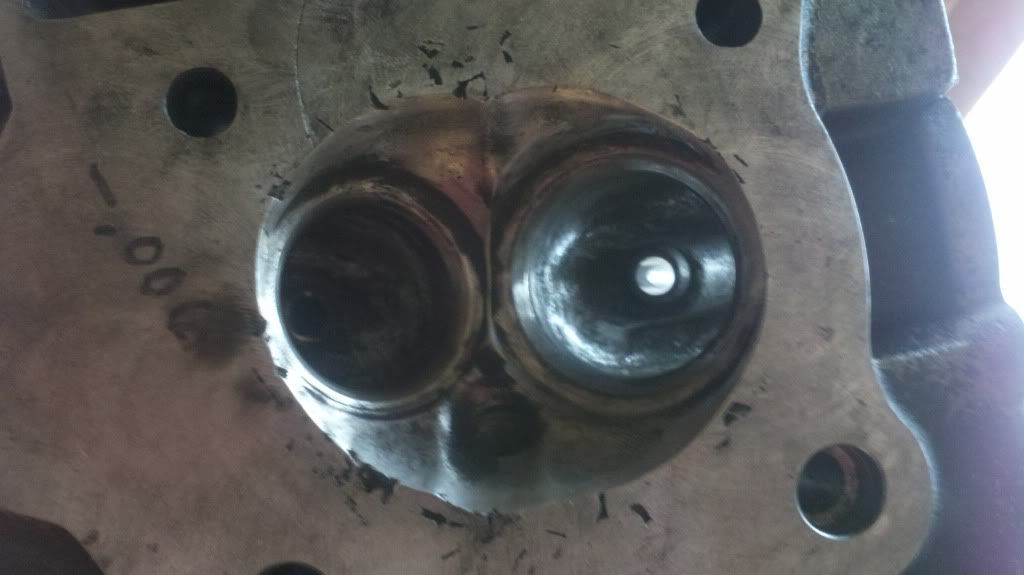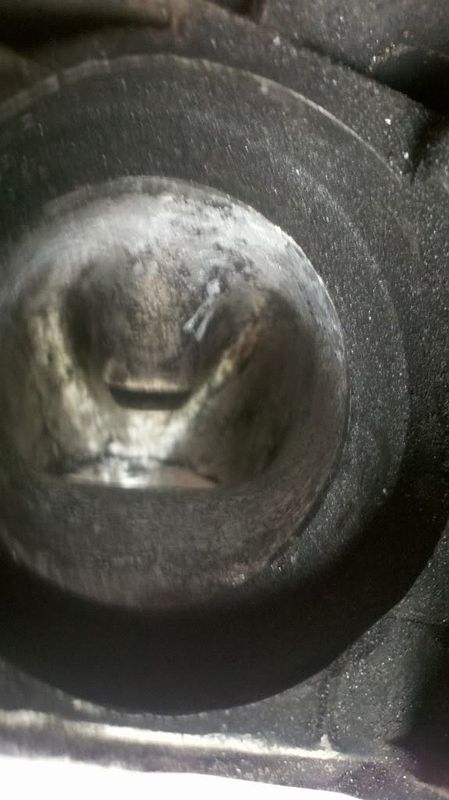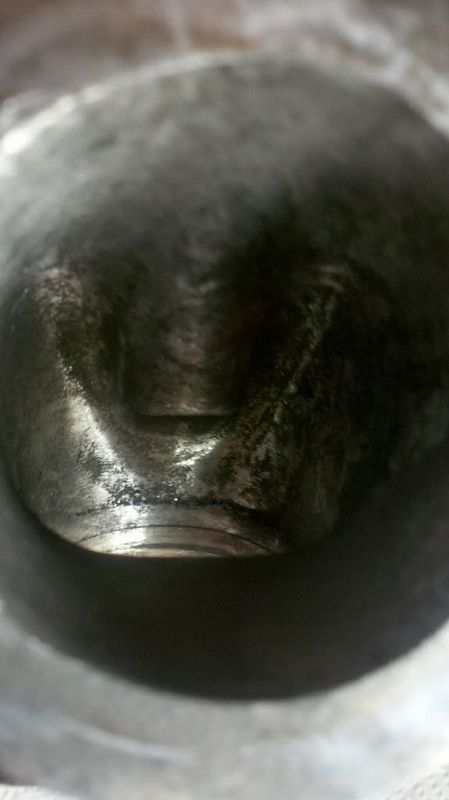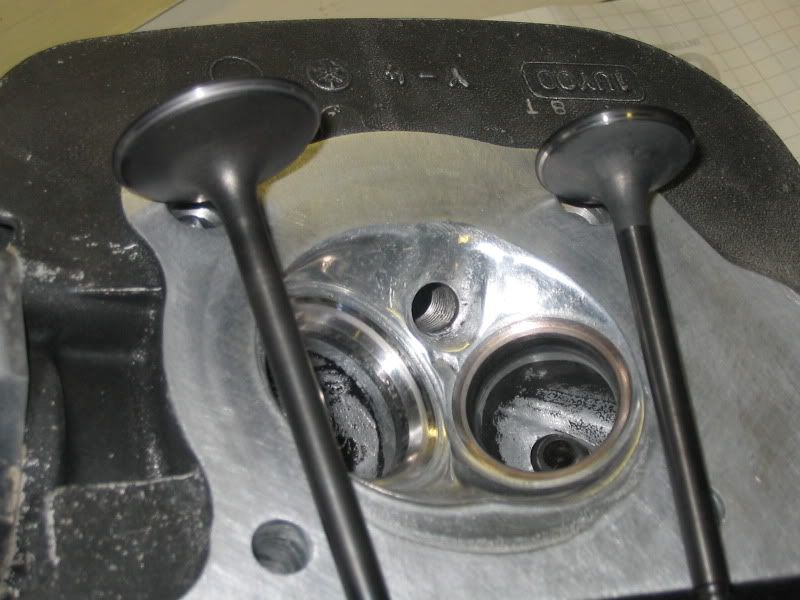No the surface on mine was flat. I noticed that, but have no idea what would have done that. It could have been detonation, but the piston should have been destroyed if it detonated that bad. Could also have been corrosion. Did it sit for a long time at any point? My chamber is unchanged also and I noticed yours is shaped a little differently. Up to now all I have done was smooth any casting perfections and removed very little material. What year is your head off of? Just wondering if the chamber shape was different on earlier and later models.














































